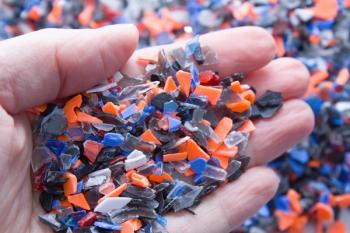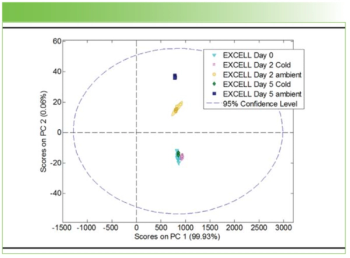Key Points
- Raman imaging with PCA and MCR-ALS enabled non-destructive identification of organic compounds in a Martian meteorite.
- Spectroscopic analysis preserved meteorite integrity by avoiding surface alteration or polishing.
- A Renishaw inVia spectrometer with controlled laser power and daily calibration ensured precise, artifact-free Raman measurements.
- This spectroscopic approach supports biosignature detection in Martian samples and future planetary return missions.
Unlocking Ancient Secrets from Mars with Spectroscopy
In an exciting step forward for planetary science, researchers at the University of the Basque Country (UPV/EHU) have successfully applied advanced Raman imaging and chemometric techniques to identify organic compounds within the Martian meteorite NWA 6148. Their study, recently published in Spectrochimica Acta Part A: Molecular and Biomolecular Spectroscopy, demonstrates the power of combining spectroscopy with data-driven methods to decode complex extraterrestrial material—an approach poised to transform how scientists analyze Mars-returned samples (1).
This work was led by a team of scientists including Leire Coloma, Julene Aramendia, Jose Manuel Amigo, Iratxe Población, Fernando Alberquilla, Giulia Gorla, Jennifer Huidobro, Imanol Torre-Fdez, Gorka Arana, and Juan Manuel Madariaga, all from the Department of Analytical Chemistry at UPV/EHU in Leioa, Spain (1).
A New Toolset for Martian Analysis
One of the major challenges in Martian research is accurately identifying organic molecules—key biosignatures of potential past life—amid a complex matrix of inorganic minerals. Although NASA's Perseverance rover is equipped with sophisticated instrumentation, including Raman spectroscopy tools like SHERLOC and SuperCam, interpreting overlapping spectral signals from complex Martian material remains daunting (1,2).
The study targets this problem directly by coupling Raman imaging with principal component analysis (PCA) and multivariate curve resolution–alternating least squares (MCR-ALS). These chemometric tools help distinguish and extract pure spectral signatures of individual compounds, even in noisy or overlapping data environments. PCA first estimates the number of unique spectral contributors, while MCR-ALS further resolves these into relative concentrations and component spectra—analogous to separating ingredients in a chemical recipe (1).
Spectral Precision: Instrumentation and Methodology
Using a Renishaw inVia micro-Raman spectrometer with a Leica microscope, the team analyzed selected regions of the NWA 6148 Martian Nakhlite meteorite. A 532 nm laser, set to only 10% of its power to prevent thermal degradation, was used to gather 4279 and 5689 spectra from two areas of interest—tiny “bubbles” likely to contain organics (1).
High-resolution single-point scans complemented the imaging data. These scans, performed with low-power lasers and long exposures (up to 20 seconds), ensured the accuracy of the spectral data. Calibration was conducted daily using silicon standards, preserving precision throughout the analysis (1).
Unlike many terrestrial Raman studies, these measurements were taken without polishing or altering the meteorite’s surface—a necessity for maintaining the integrity of rare extraterrestrial materials, especially ahead of NASA’s planned Mars Sample Return (MSR) mission (1).
Chemometrics at Work: PCA and MCR-ALS
PCA was instrumental in reducing data dimensionality and estimating the number of spectral contributors. It helped separate signal variance into orthogonal principal components, revealing the major sources of chemical variability within the meteorite samples. This step informed the next phase: spectral unmixing (1).
Using MCR-ALS, the researchers deconvoluted the complex Raman spectra into “pure” spectral profiles and estimated their relative abundances. Non-negativity constraints were applied to ensure physically and chemically meaningful results—meaning no compound could have a negative concentration or signal. This approach overcame common ambiguities in curve resolution and enabled the identification of distinct organic and inorganic constituents (1).
Implications for Mars Missions and Beyond
This technique provides a powerful blueprint for future laboratory studies of Mars-returned samples. The ability to identify organic molecules in their native context, without destroying samples, is crucial to confirming potential biosignatures. It also lays groundwork for analyzing other extraterrestrial materials, from lunar regolith to comet dust (1).
Furthermore, the study builds on the work of missions like Curiosity and Perseverance, which have already detected various organic molecules—including dichloroalkanes, chlorobenzene, thiophenes, and long-chain hydrocarbons—on Mars. By refining how such findings are interpreted and validated on Earth, this research adds a new dimension to astrobiological exploration (1,2).
References
(1) Coloma, L.; Aramendia, J.; Amigo, J. M.; Población, I.; Alberquilla, F.; Gorla, G.; Huidobro, J.; Torre-Fdez, I.; Arana, G.; Madariaga, J. M. Analysis and Interpretation of Organic Compounds in Martian Meteorites with Raman Imaging and Chemometrics. Spectrochim. Acta, Part A 2025, 338, 126194. DOI: 10.1016/j.saa.2025.126194
(2) Workman, J., Jr. Exploring Mars with Light: S. Michael Angel on the SuperCam Instrument. Spectrosc. Online, May 2, 2025. https://www.spectroscopyonline.com/view/exploring-mars-with-light-s-michael-angel-on-the-supercam-instrument (accessed May 22, 2025).






